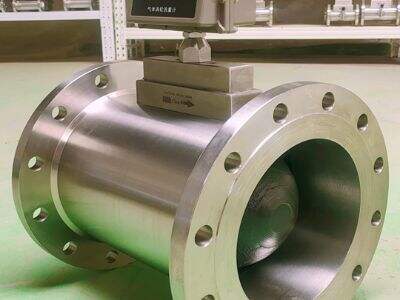In industrial applications, there are two common types of liquid flow meters used to measure flow: electromagnetic and ultrasonic. They are key to accurate and efficient operations, though they vary significantly in terms of accuracy, precision, installation, maintenance — By understanding the key differences between an electromagnetic flow meter and an ultrasonic flow meter We can gain a better sense of what might be advantageous for businesses seeking to improve its flow measurement systems.
Accuracy and precision of electromagnetic and ultrasonic flow meters compared
Accuracy Electrical and Ultrasonic Flow Meters One of the most important differentiators in electromagnetic and ultrasonic flow meters is the accuracy / precision. High accuracy is associated with electromagnetic electronic flow meter, particularly when measuring the flow of conductive mediums such as water or chemicals. These meters are based on Faradays law of electromagnetic induction used for flow measurements with very high precision and repeatability. In contrast, ultrasonic flow meters rely on sound waves to determine flow rates and can be used for a broader array of fluids, including low conductive liquids. Ultrasonic flowmeters have decent accuracy, though their applications where they can be slightly less precise than electromagnetic meters.
The Distinctions in Installation and Service Between Electromagnetic and Ultrasonic Flow Meters
Electromagnetic flow meter vs ultrasonic Installation and maintenance Both installation and maintenance are key to deciding between an electromagnetic or an ultrasonic flowmeter. Electromagnetic flow meters are usually very easy to install since little or no straight pipe lengths are required. They are also less susceptible to stoppage or damage by such fluid-borne particles. As far as maintenance goes, electromagnetic flow meters are famed for their longevity; many can work practically without any form of attention. In contrast, ultrasonic flowmeter could be more difficult to install due to the careful positioning of transducers for performance. Ultrasonic meters may require regular calibration or testing for accurate measurements. In summary, whether to use electromagnetic flow meters or ultrasonic will largely depend on the needs of your application and how accurate and easy to maintain you want the meter to be.
Best wholesale flow meters
If you are searching for the best wholesale flow meters that you can use with your systems, then KAMBODA has got to be a trusted name. Electromagnetic and ultrasonic flowmeters are both common, with distinct advantages and disadvantages of their own. Instead, let's get into the pros and cons of each to help you decide which option is better suited for your wholesale needs.
There are multiple reasons one might favor electromagnetic over ultrasonic for wholesale purposes. Electromagnetic flowmeters are also well known as one of the measuring instruments which provides the best turn down ratio and high accuracy and reliability for conducting liquids. Plus, they are easy to maintain and will last a long time. On the other hand, it is noted that ultrasonic flow meters are non-invasive and capable of measuring a variety of liquids such as dirty and corrosive fluids. There is ease of installation and they can read accurately, even in large pipe sizes. When deciding whether you need submerged transmitters, consider the medium that needs to be measured, any particular installation requirements and your budget.
Advantages and disadvantages of dynamic flow meters
Considering the advantages and disadvantages of dynamic flow meters for wholesale use may help you decide whether electromagnetic or ultrasonic is the right solution for you. Electromagnetic flow meters are very accurate and contain no moving parts to wear, jam up or break off. They are, furthermore, in sensitive to variations in temperature, and pressure. But they can be costlier at the outset and often call for professional installation. UFl2 meters are in contrast easy to install and their use can be widely extended. They are further non-invasive and do not interfere with the flow of the liquid being gauged. But, these may not always be as accurate as electromagnetic flow meters under some circumstances and are also susceptible to air bubbles or contaminants in the liquid.
For a wholesale application, both electromagnetic and ultrasonic flow meters have their pros and cons. Based on what you want the program to do for you, consider your needs and requirements when comparing the two. KAMBODA has a selection of top flow meters to fill your wholesale requirements.


